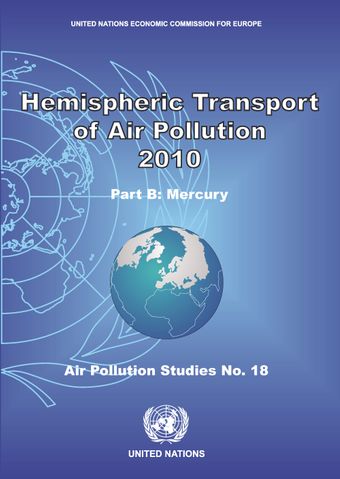Conceptual overview

- Author: Robert Mason
- Main Title: Hemispheric Transport of Air Pollution 2010 , pp 1-26
- Publication Date: October 2013
- DOI: https://doi.org/10.18356/38ccc958-en
- Language: English
- Previous Chapter
- Table of Contents
- Next Chapter
While mercury (Hg) is globally distributed mainly through the atmosphere, it differs from other major atmospheric pollutants (e.g. ozone, particulates) in that its environmental impact is not directly related to the atmospheric burden. While the major redistribution of Hg is via the atmosphere, its primary environmental and health impact is in aquatic systems, and for aquatic organisms and their consumers, as this is the location where the inorganic Hg deposited directly or indirectly from the atmosphere is converted into the highly toxic and bioaccumulative methylmercury (MeHg) (Figure 1.1). Consumption of aquatic organisms with elevated MeHg concentrations is the primary route of exposure for humans [Mahaffey et al., 2004; Sunderland, 2007] and for freshwater and marine fish-eating wildlife [Braune et al., 2006; García-Hernández et al., 2007; Kemper et al., 1994; Landers et al., 2008] (Chapter 5). In terms of relative toxicity, MeHg is orders of magnitude more toxic than the inorganic forms (ionic Hg (HgII) and elemental Hg (Hg0)) [Clarkson and Magos, 2006]. Because Hg is globally distributed, due to its relatively long residence time in the atmosphere, fish in remote regions may be impacted by regional and global sources. For example, in the United States, 48 states have Hg consumption advisories, [U.S. EPA, 2006] and many are associated with water bodies located in areas with no apparent land-based Hg contamination or local anthropogenic Hg source. However, while long range transport (LRT) is important, there are locations where Hg0 is efficiently oxidized and deposited, and for these regions, regional inputs are more important and local hotspots of Hg accumulation can be found. Since MeHg is bioconcentrated in organisms and biomagnified in aquatic food webs, large fish and those with high trophic stature tend to have higher concentrations. Thus, marine and freshwater advisories often target specific fish species and are size based [Burger and Gochfeld, 2004; Chen et al., 2008]. Since the developing human nervous system is sensitive to MeHg, young children and children of women who consume fish during pregnancy are potentially at risk [Clarkson et al., 2003; NRC, 2000; WHO, 1990], and are therefore the target of most advisories.
© United Nations
ISBN (PDF):
9789210541084
Book DOI:
https://doi.org/10.18356/1415ffe5-en
Related Subject(s):
Transportation and Public Safety
Sustainable Development Goals:
-
From This Site
/content/books/9789210541084c003dcterms_title,dcterms_subject,pub_keyword-contentType:Journal -contentType:Contributor -contentType:Concept -contentType:Institution105
/content/books/9789210541084c003
dcterms_title,dcterms_subject,pub_keyword
-contentType:Journal -contentType:Contributor -contentType:Concept -contentType:Institution
10
5

